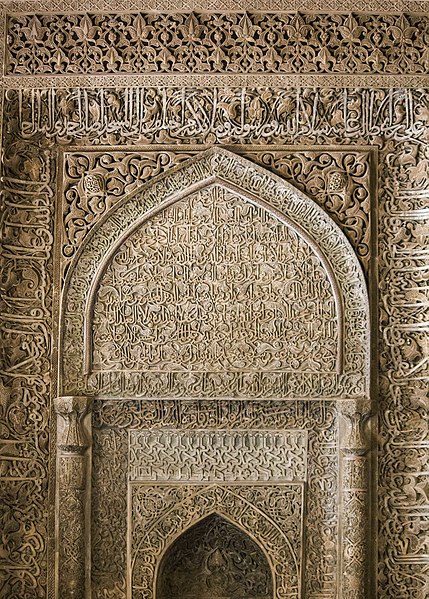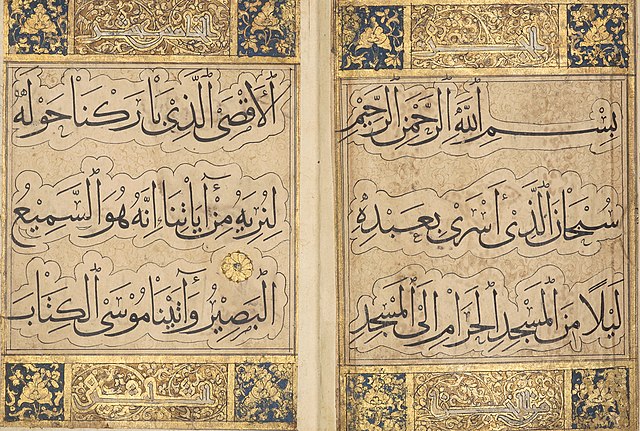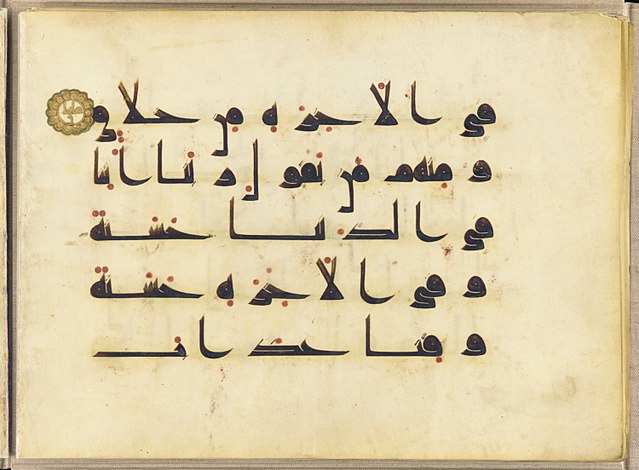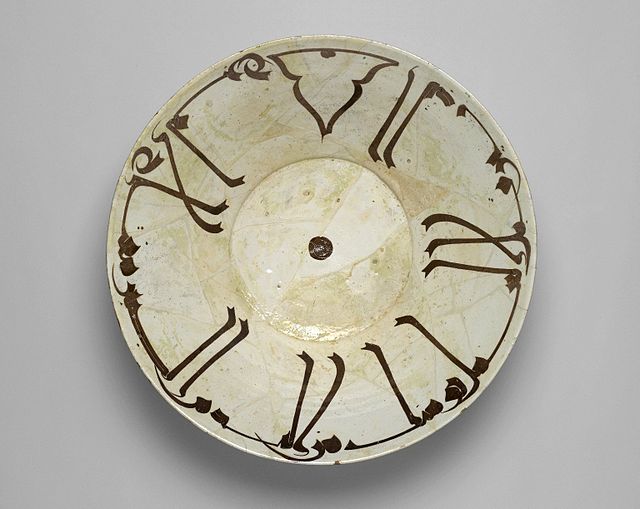Thuluth is an Arabic script variety of Islamic calligraphy. The straight angular forms of Kufic were replaced in the new script by curved and oblique lines. In Thuluth, one-third of each letter slopes, from which the name comes. An alternative theory to the meaning is that the smallest width of the letter is one third of the widest part. It is an elegant, cursive script, used in medieval times on mosque decorations. Various calligraphic styles evolved from Thuluth through slight changes of form.
Line in thuluth written by Yaqut al-Musta'simi (d. 1298). Library of Congress.
Mihrab in the winter prayer hall of the Jameh Mosque of Isfahan with inscription in carved stucco in thuluth designed by Haydar (d. 1325/1326)
Mamluk enamelled flask. Its shoulder bears a wide band with a dedication to an unnamed sultan in thuluth. Egypt or Syria, first half of the 14th century. Khalili Collection of Islamic Art.
Opening pages from the Mamluk Qur'an with first verse of Al-Fatiha in monumental thuluth script. Egypt, late 1350s. Egyptian National Library.
Islamic calligraphy is the artistic practice of handwriting and calligraphy, in the languages which use Arabic alphabet or the alphabets derived from it. It includes Arabic, Persian, Ottoman, and Urdu calligraphy. It is known in Arabic as khatt Arabi, which translates into Arabic line, design, or construction.
The Surah "Al-Isra'" copied by the 13th century calligrapher Yaqut al-Musta'simi in Muhaqqaq script with Kufic incidentals.
9th century Qur'an, an early kufic example from the Abbasid period
Bowl with Kufic Calligraphy, 10th century. Brooklyn Museum
Muraqqa script by Mehmed Şevkî Efendi of the two intro pages of the Quran








